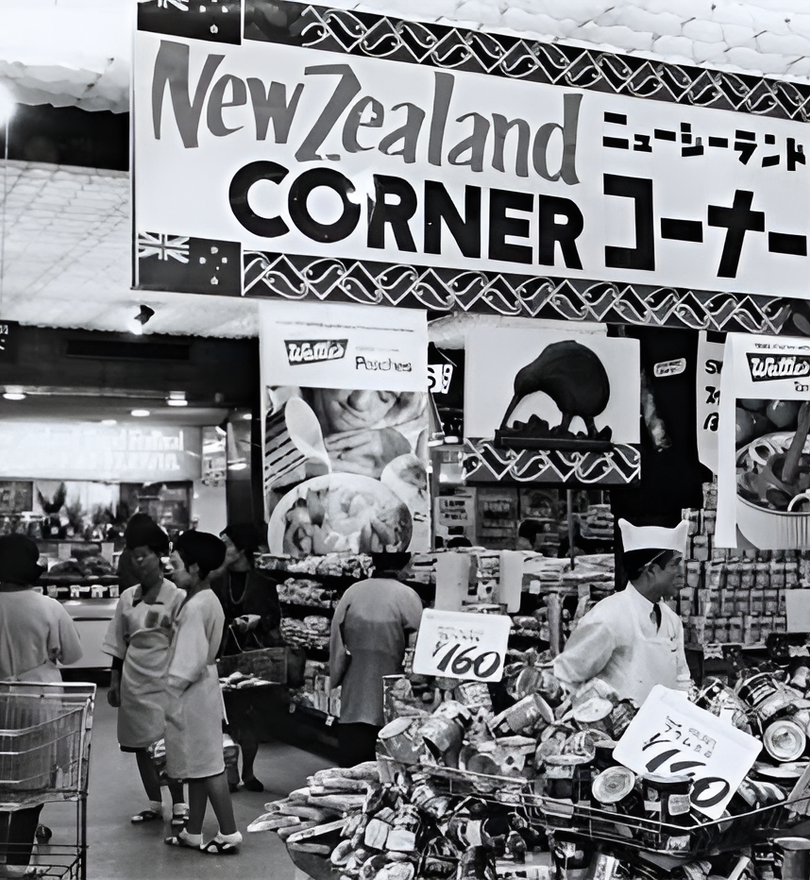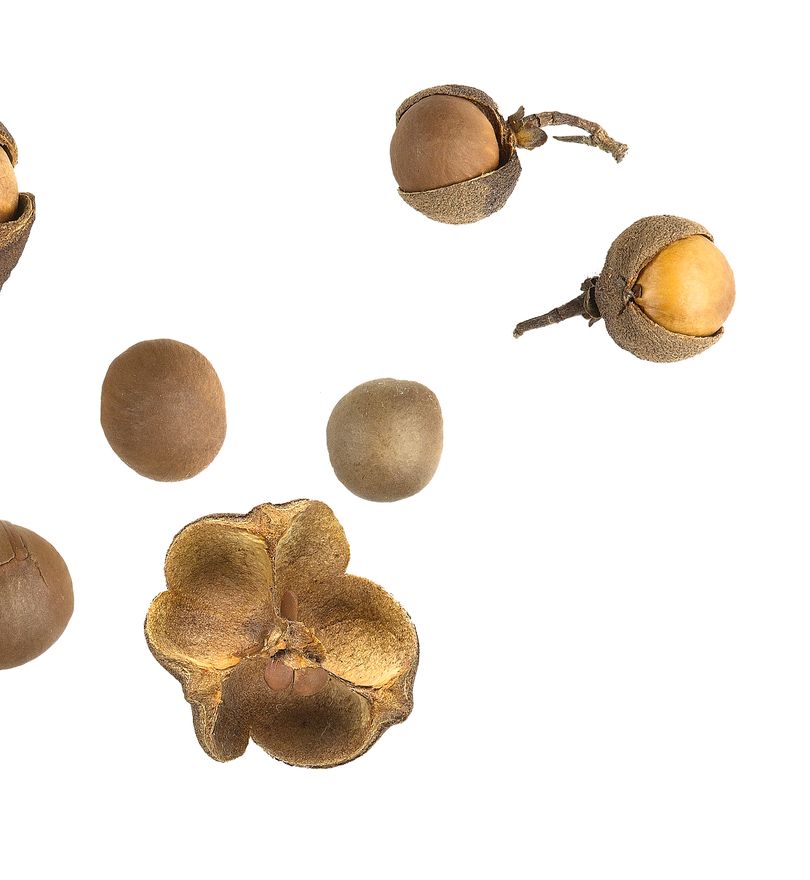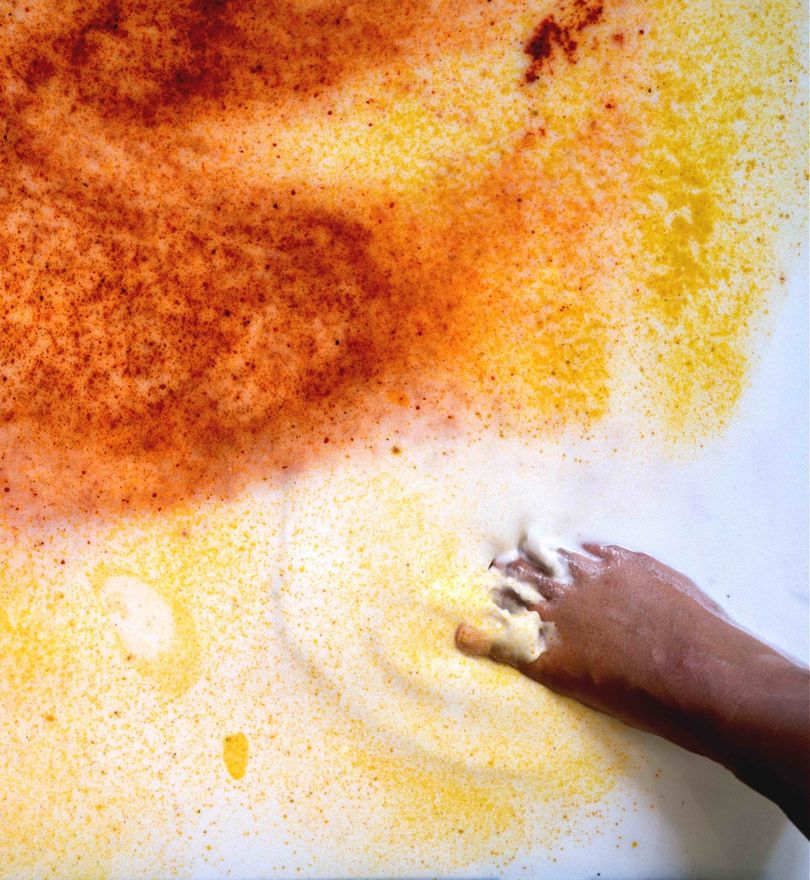
A final batch of highlights from our growing archive of Aotearoa Asian art, selected by some of the Satellites team.
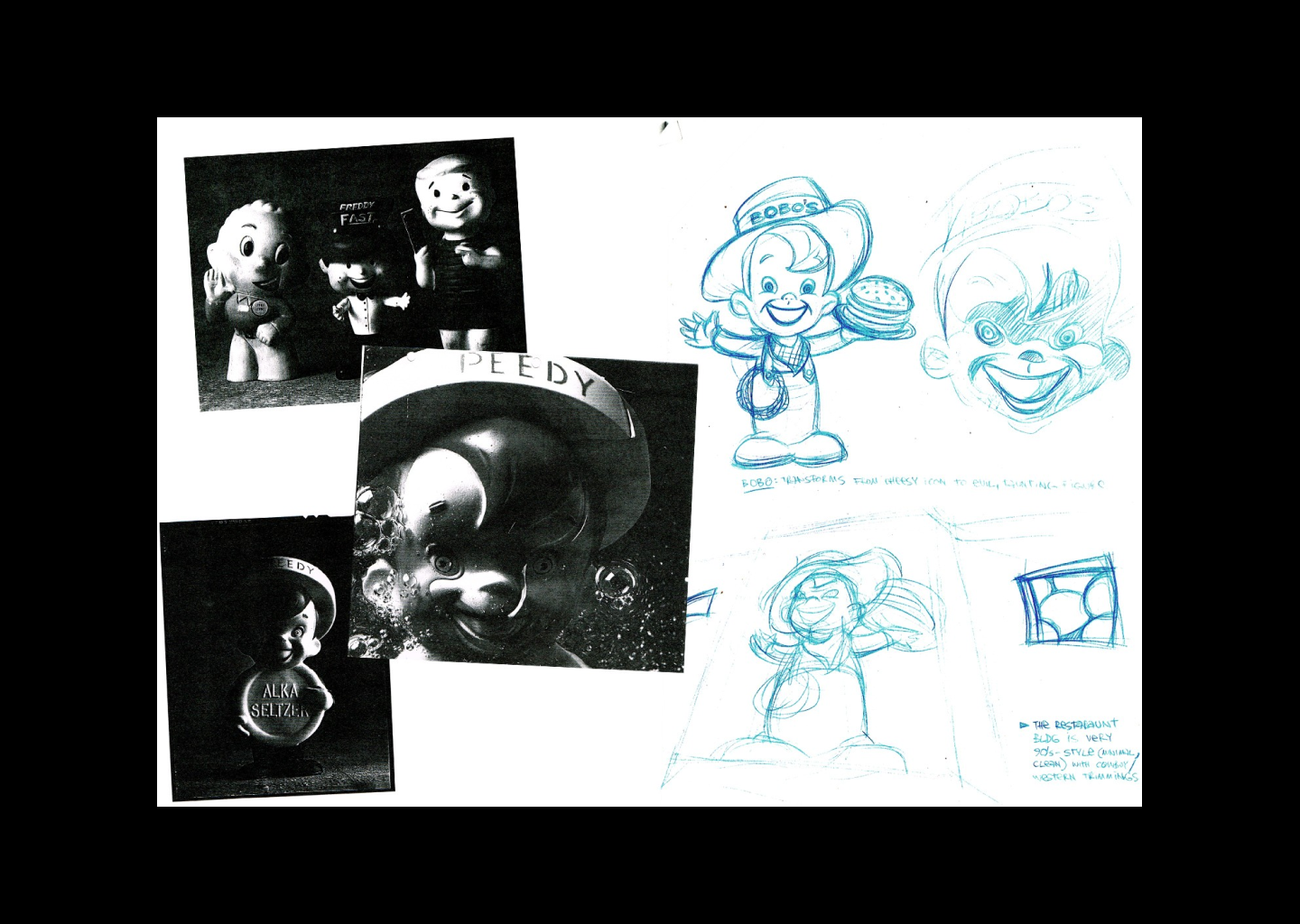
Early designs for Bobo's, the fast food chain in The Dharma Punks, 1998–1999
Courtesy of Ant Sang
Emma Ng — Satellites Editorial Director
I know, I know, we already published an excerpt from The Dharma Punks in Issue 3. But the archive entry for The Dharma Punks is exactly what I envisioned the Satellites archive might be, when Rosabel and I began talking about developing the it two years ago. As well as writing about the genesis and legacy of the 1990s comic, Jenn Cheuk worked with Ant to pull together a range of ephemera, which plunges us into Ant’s artistic process and the world that the comic was launched into in turn-of-the-millennium Tāmaki Makaurau. I hate to use the word ‘inspiring’, but seeing his early character designs, reference photos for locations and the menacing Bobo’s fast-food mascot, and script notes is … inspiring. It’s really satisfying to have created a place where those can be shared publicly for posterity.

Diesel, promo photo for NYMPHO, 2022
Courtesy of NYMPHO
Marc Conaco — Designer, illustrator and Satellites archivist
From its inception, I’ve been drawn to the visuals and social media presence of NYMPHO, a queer club collective. Getting to interview one of its co-founders, Diesel, who is an embodiment of the NYMPHO ethos, was such a dream. Unapologetically smutty and deliciously camp, the club nights organised by NYMPHO are a big middle finger to respectability politics and the policing of queer behaviour for mainstream acceptance. They are a reflection of the radical nature of queer history that has been about the resistance to heteronormativity through embracing queer creativity and freedom of expression.
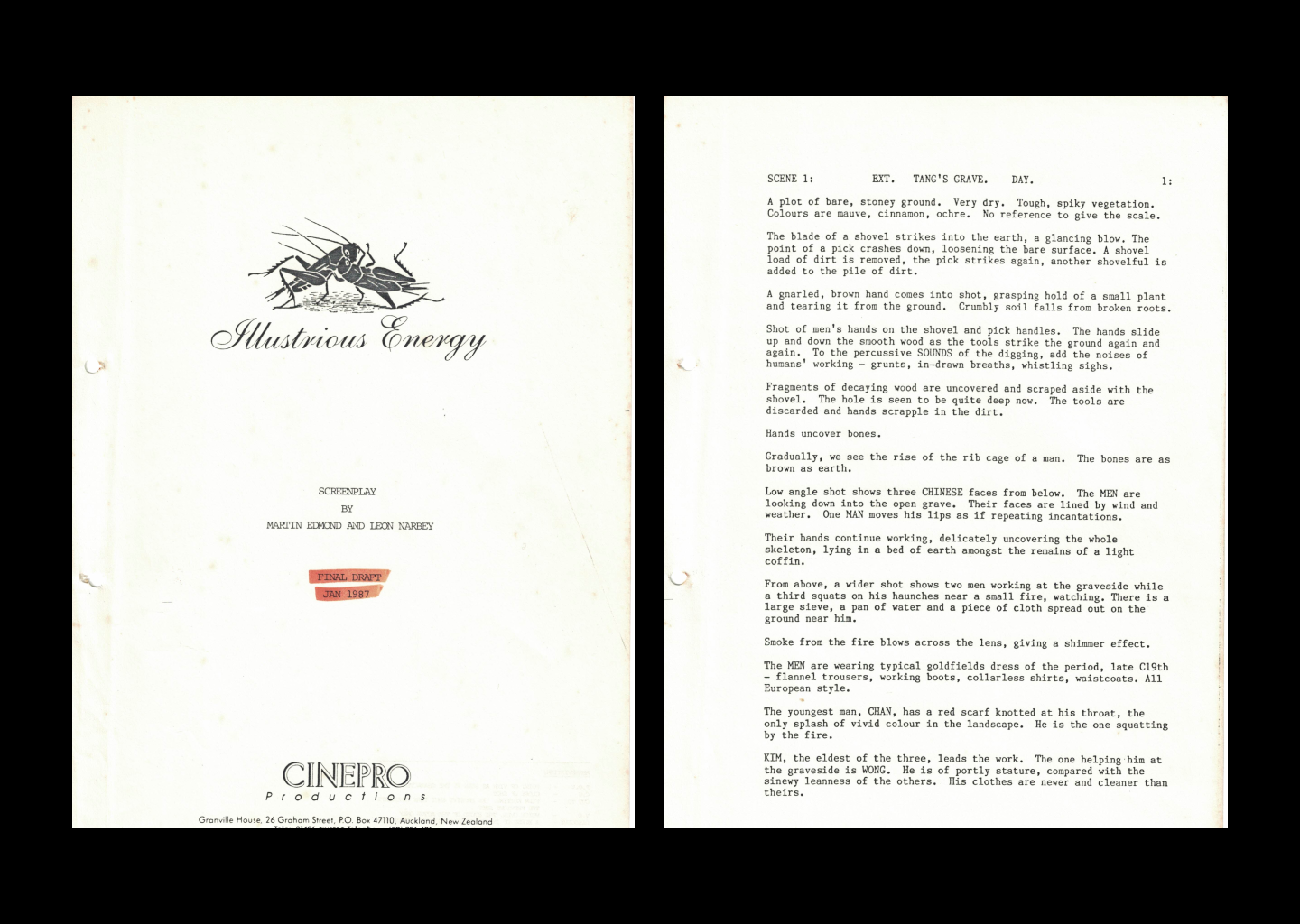
Title page and first page of the final draft screenplay for Illustrious Energy by Leon Narbey and Martin Edmond, 1987
Tim Wong — Writer, designer, filmmaker and Satellites archivist
A piece of ephemera I’m fond of is this excerpt of the original script for Illustrious Energy. The cover page features an etching of fighting crickets — an actual scene from the film — which echoes the harshness of the gold-mining trails and, soberingly, the struggles of Chinese immigrants during the poll tax era. The pages were shared by Helene Wong, who was a script and casting consultant on the production. In the following decades she became a film critic for the New Zealand Listener and a vital storyteller of Chinese New Zealand history.
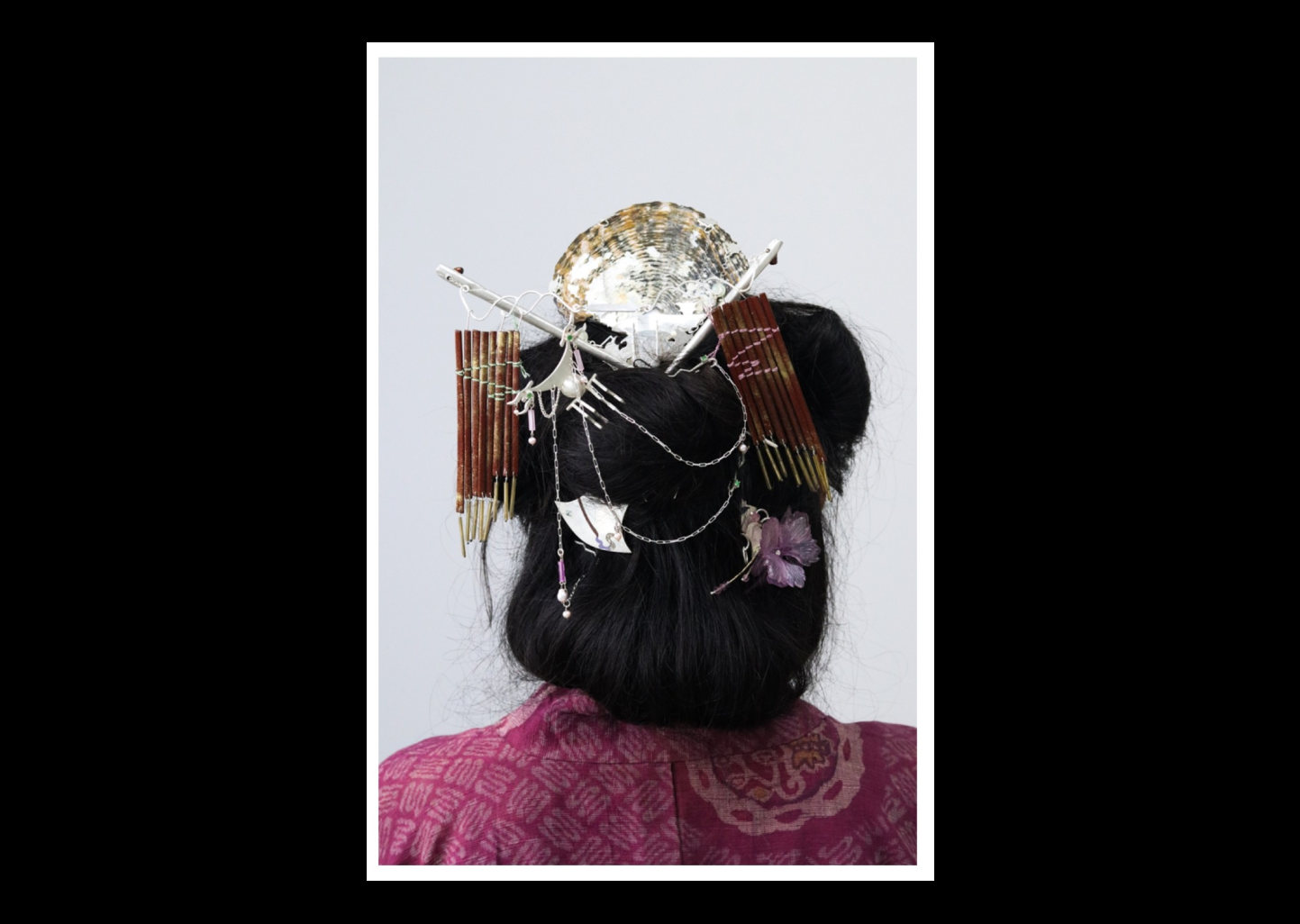
Hair pins made by Jenny Takahashi Palmer modelled on the artist's sister, with hair by Hu Nakagawa, 2020, objects made with silver, urushi, pearls, aquamarine, bamboo, tourmaline and various beads
Photo by Ophelia King, courtesy of Jenny Takahashi Palmer
Van Mei — Artist, writer and Satellites archivist
I’ve long been obsessed with craft and jewellery practices. I adore objects that are infused with the ornate, crafted with precious materials (whether they be rare or personal), which become, for me, symbols of the innate divinity of being part of nature and community. Being and growing our collective human-ness is a spiritual experience, an ancient and beautiful transformative practice we’ve inherited from each of our long lineages of existence on earth. Jenny Takahashi Palmer’s artworks exemplify the beauty that lives in the world, to me, and the incredible space of art in integrating our pasts and future through evolving customs and materials. They’re just unspeakably beautiful objects! Adding her artworks to the archive has been a complete privilege. I just love how frank she is about the way she works, too, eschewing the artist-celebrity for a more humble kind of making. Her sense of trying to protect her art practice from commodification and preserve joy really resonates.
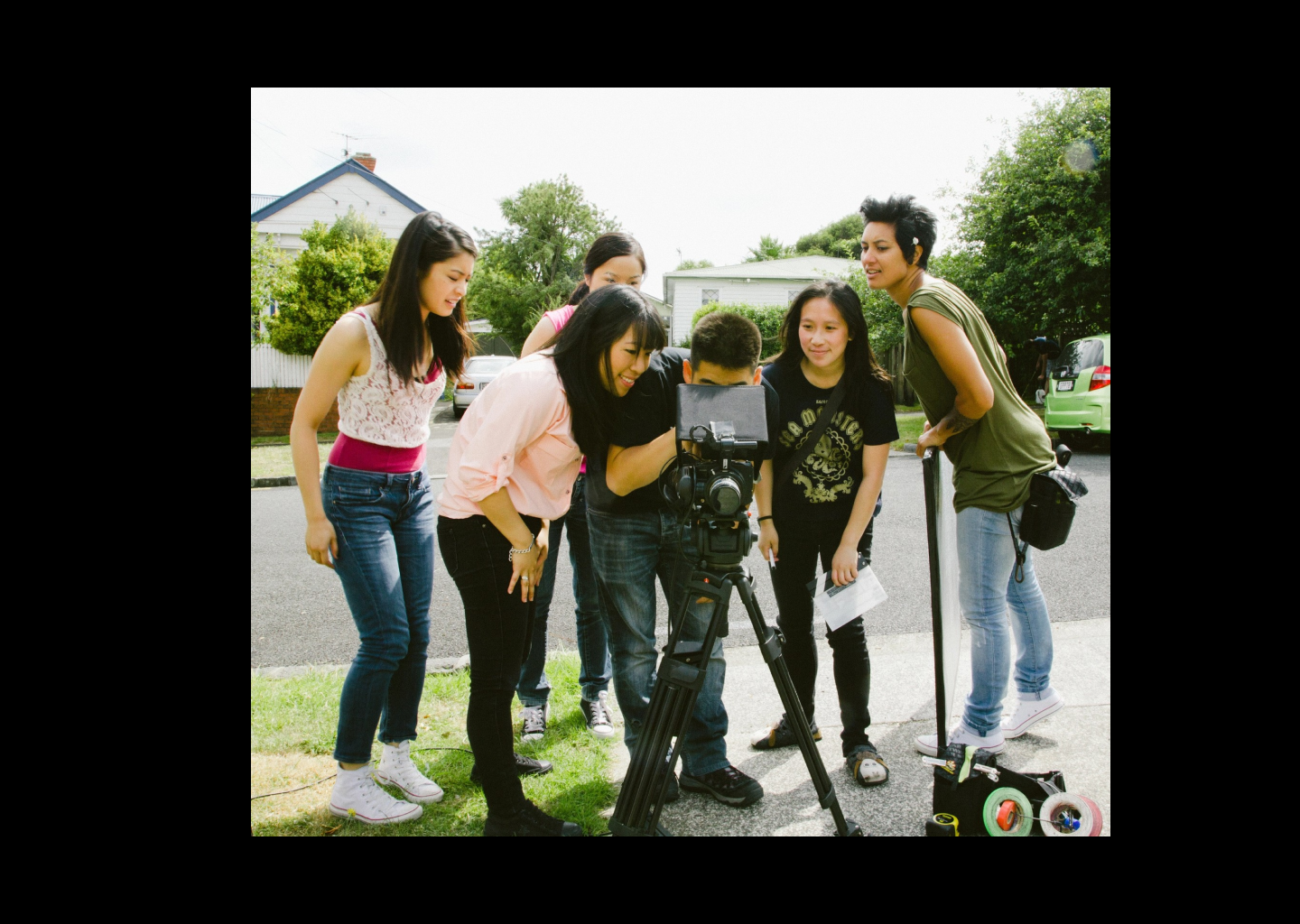
First day of shooting for Flat3, 2013
Photo by Steven Chow
Rosabel Tan — Satellites Director
Recently, we’ve been asking artists if they have ephemera they’d like to add to the archive, and I love these behind-the-scenes photos that Roseanne Liang sent through — spanning fifteen years of filmmaking, they offer an intimate and joyful glimpse into her career. Images like this one — from the first day of shooting Flat3, taken by none other than Steven Chow — capture such special moments in history.

